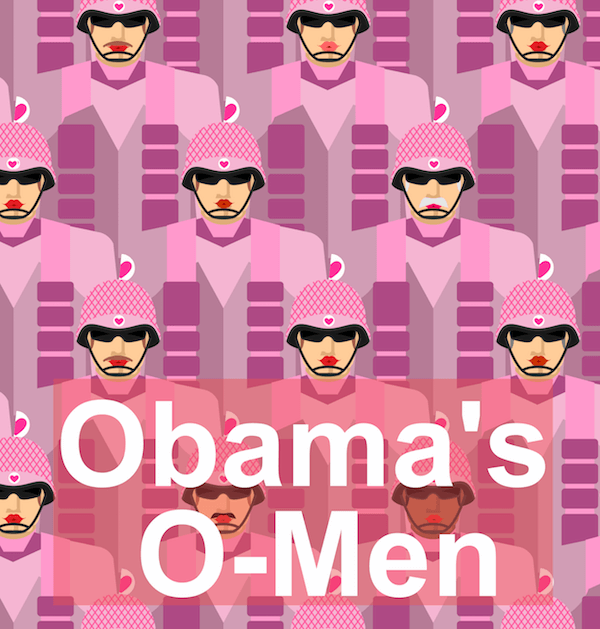Second Amendment to the United States Constitution
The first section explains why I (Cody Cofer) thought about writing this post. If you can make it through my thoughts in the first section, the rest is actually pretty good stuff on the Second Amendment. Always remember, regardless of your politics, life style, or nationality, if you find yourself at odds with the government, you can call me!
Learn about Texas Open Carry Laws
The Strangest Things
On social media, usually the same people that post, “I LOVE MY GUNS!” also post “I BACK THE BLUE!” These “Posters” confuse me. The fundamental idea behind the right to bear arms is that citizens must have the means to keep their government in check by the citizenry’s ability to use force to take control. Who do these Posters think the government is? Do the Posters think when the government comes for them that Obama will send a special squad with big pink O’s painted on their chests? No, the police (city, county, and state) are the front lines for the government against citizenry. If assault rifles are banned, and a Poster shows up to a range with an assault rifle, do Poster’s think Obama’s Omen are the ones going out to make the arrest? No, it’s probably a county sheriff’s deputy.
All this to say, I cannot reconcile the two messages from these Posters:
- I love and support law enforcement, BUT
- I need my AR-15 to shoot them if they get outa line!

Divide in the Meaning of the 2nd Amendment
The Second Amendment is one oft quoted and referenced, but rarely do those doing the quoting actually cite the text in its entirety. The Framers wrote, “A well regulated Militia, being necessary to the security of a free State, the right of the people to keep and bear Arms, shall not be infringed.” In recent years a string of circuit court and Supreme Court cases have attempted to interpret the amendment and give it meaning. A sharp divide has arisen among interpreters as to who the Framers intended to give the right to bear arms to. Was it the individual or was it the military (militia)?
An Individual Right
The Supreme Court adopted the individual right interpretation of the Second Amendment in their landmark case District of Columbia v. Heller, 554 U.S. 570 (2008). The core holding of Heller says the individual right is tied to the natural right of self-defense. Supporters of the Court’s individual right to bear arms claim the text’s use of the word militia as one that refers to all citizens not only military personnel. Scholars look to the meaning of words at the time of the Constitution’s drafting and interpret “militia” to refer to all “Citizens capable of bearing arms.” Scott Bursor, Towards a Functional Framework for Interpreting the Second Amendment, 74 Tex. L. Rev. 1125, n.22 (1996). Militia is commonly interchanged with the term “people” among the legal scholar community. See id.
Additionally individual right supporters argue the text plainly states it is a “right of the people” meaning all people. The placement of the Second Amendment within the Bill of Rights supports the idea that it is an individual right. The Supreme Court has held the term “people” to have a consistent meaning throughout the Constitution. See United State v. Verdugo-Urquidez, 494 U.S. 259, 265 (1990) (noting that in addition to the First, Second, and Fourth Amendments’ use of the term, the Preamble also declares the Constitution was established for the People). Individual right advocates argue that the Framers did not intend for “people” to mean individuals in some provisions of the Constitution but to states in others.
To “bear arms” is a general term, and can apply to either members of the militia or civilians, depending on the context surrounding the phrase. The Fifth Circuit in United States v. Emerson, 270 F.3d 203 (5th Cir. 2001), interprets the Amendment to give the right to the individual because of the surrounding “right of the people” language. Id at 231-32. Additionally the right to “keep and bear arms” is argued to be individual because of the word “keep”. Legal scholars state that that the word “keep” is telling because it means a private right to have arms in one’s home.
The structure of the Second Amendment is argued to guarantee a right to an individual. The Amendment can be divided into clauses, divided at the second comma. Parker v. District of Columbia, 478 F.3d 370, 388 (D.C. Cir. 2007). The first part of the Amendment, “A well-regulated Militia, being necessary to the security of a free State” is considered the prefatory clause. The operative clause is “the right of the people to keep and bear Arms shall not be infringed. Parker argues that the prefatory clause conveys a civic duty purpose, but does not qualify the rights protected by the operative clause. See id. The sentence structure appears odd by today’s standards, but this type of wording was common for the time.
Opponents of Individual Right

Despite the Supreme Court’s holding in Heller, some still interpret and argue that the Second Amendment does not confer an individual right. Opponents of the individual right argue that the text and use of the word “Militia” should be given proper meaning. In his Heller dissent, Justice John Paul Stevens argues that the meaning of the Framers was express because of their use of “Militia” and demands that it be interpreted to touch on state militia service and not an individual right. Collective rights advocates interpret the use of the word “Militia” in a literal rather than an historical context. Further those that support the idea that the right is collective point to the structure of the Amendment language and the importance and placement “Militia” is given. The collective-rights group essentially argues that the individual rights interpretation requires contortion of the language and is a stretch. Essentially, the collective right believes that if the Framers had intended to bestow the right on individuals, they would have just said so rather than referencing the militia.
Whatever your personal take on the Second Amendment, the Supreme Court has spoken, at least for now, on the issue as it applies to Federal Law and to the States. See McDonald v. Chicago, 561 U.S. 742 (2010). The rule of stare decisis should mean that the individual right interpretation shall remain, but its not unheard of that the Supreme Court could reverse itself at some point in the future. We’ve seen it before. And most importantly, the late Antonin Scalia, the author of the Heller majority noted that the Second Amendment individual right was not an unlimited one or one that could not be regulated. With the unprecedented gun violence of late, Scalia’s vacancy and the looming presidential election which will decide which party nominates his successor, it appears that the Second Amendment debate rages on.
Author: Cody Cofer, Fort Worth Criminal Defense Attorney – Board Certified in Criminal Law by the Texas Board of Legal Specialization.

